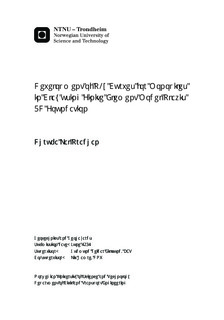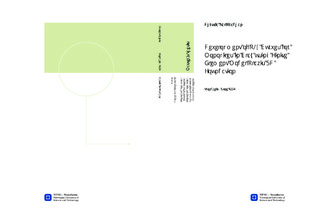| dc.contributor.advisor | Eiksund, Gudmund Reidar | nb_NO |
| dc.contributor.advisor | Hamre, Liv | nb_NO |
| dc.contributor.author | Pradhan, Dhruba Lal | nb_NO |
| dc.date.accessioned | 2014-12-19T11:29:19Z | |
| dc.date.available | 2014-12-19T11:29:19Z | |
| dc.date.created | 2012-11-08 | nb_NO |
| dc.date.issued | 2012 | nb_NO |
| dc.identifier | 566192 | nb_NO |
| dc.identifier | ntnudaim:7988 | nb_NO |
| dc.identifier.uri | http://hdl.handle.net/11250/232178 | |
| dc.description.abstract | The monopiles with typical diameters of 4-6m are mostly used as foundations for the offshore wind turbine structures to resist the vertical and horizontal loads. The response of the laterally loaded pile depends upon the soil and pile behavior and also on the interaction between them. Various methods for the development of p-y curves exist and the accuracy of such methods depends upon the data from which it was developed. The accuracy of the analysis of the pile depends on the accuracy at which the p-y curve represents the soil response to the lateral pile deflection because most of the commonly used p-y curve criteria are based on a very limited number of tests. The p-y curve recommended by American Petroleum Institute (API) code which is widely used by geotechnical engineers for the analysis of laterally loaded piles; however the method was developed for the slender piles with diameters up to approximately 2m. Hence several authors have claimed that p-y curves should be revised to be applicable for large diameter rigid pile (Augustesen, Sorensen, & Ibsen, 2010), (Achmus, Abdel-Rahman, & Kuo, 2008).The thesis presents the finite element model (FEM) analysis of monopiles in marine clay with the diameter from 1m to 6m by means of the Plaxis 3D Foundation. To avoid the influence of the pile flexibility and pile rotation, lateral translation of rigid piles is analyzed.The rigid pile and soil with hardening soil parameter is modeled in FEM Plaxis 3D Foundation. Piles are loaded with lateral loads to obtain the soil response on pile and pile deflection at different stages which in turn is used for the development of p-y curve and are compared with the API p-y curves. The result does not show any diameter effect in the initial stiffness but the initial stiffness of soil is very low in comparison to that given by the p-y curve (API code). Low stiffness compared to API p-y curve may be due to the selected parameters of the soil model.As the result shows difference in p-y curve from FEM 3D plaxis foundation and API code, some field test results for larger diameter will be fruitful to decide which method is valid for the analysis of the larger diameter monopiles. | nb_NO |
| dc.language | eng | nb_NO |
| dc.publisher | Institutt for bygg, anlegg og transport | nb_NO |
| dc.subject | ntnudaim:7988 | no_NO |
| dc.subject | MSGEOTECH Geotechnics and Geohazards | no_NO |
| dc.title | Development of P-Y Curves for Monopiles in Clay using Finite Element Model Plaxis 3D Foundation | nb_NO |
| dc.type | Master thesis | nb_NO |
| dc.source.pagenumber | 74 | nb_NO |
| dc.contributor.department | Norges teknisk-naturvitenskapelige universitet, Fakultet for ingeniørvitenskap og teknologi, Institutt for bygg, anlegg og transport | nb_NO |

